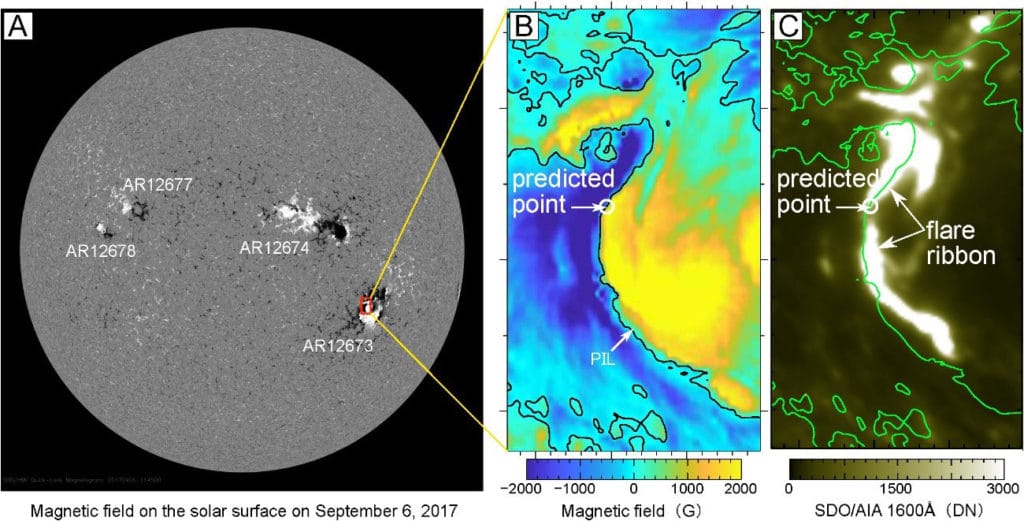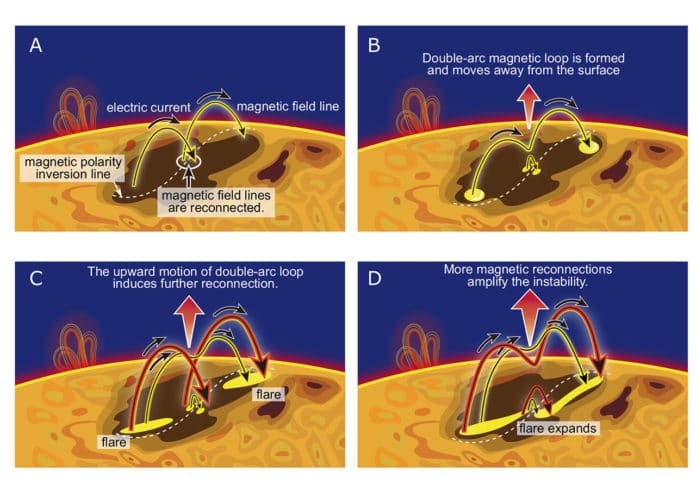The sudden release of magnetic energy on the Sun drives powerful solar flares, challenging to predict. The mechanism that drives solar flares’ onset is unknown, hampering efforts to forecast them, which mostly rely on empirical methods.
Scientists from Nagoya University have developed a physics-based model to predict imminent large solar flares. The method, known as the kappa scheme, is based on the theory of “double-arc instability,” which is a magnetohydrodynamic (MHD) instability triggered by magnetic reconnection.
Scientists assumed that a small-scale reconnection of magnetic field lines could form a double-arc curve (m-shape) magnetic field and trigger a solar flare. The kappa – scheme can foresee how a small magnetic reconnection triggers a large flare and how a large solar flare can occur.
The predictive model was tested on about 200 active regions during solar cycle 24 from 2008 to 2019 using data obtained by NASA’s Solar Dynamics Observatory (SDO) satellite. It was demonstrated that with few exceptions, the kappa-scheme predicts the most imminent solar flares and the precise location they will emerge from.

Scientists also discovered a new parameter – the “magnetic twist flux density” close to a magnetic polarity inversion line on the solar surface – determines when and where solar flares probably occur and how large they are likely to be.
While it takes a lot more work to implement the scheme in real-time operational forecasting, this study shows that the physics-based approach may open a new direction for flare prediction research.
Journal Reference:
- Kanya Kusano et al. A physics-based method that can predict imminent large solar flares. DOI: 10.1126/science.aaz2511
